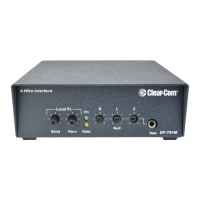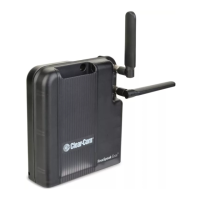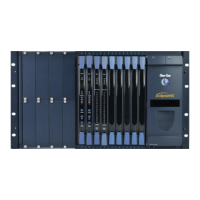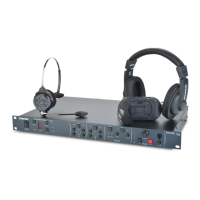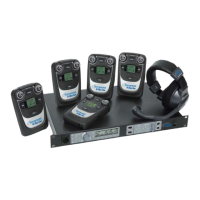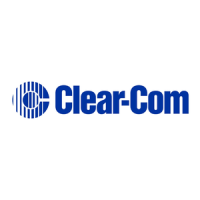Clear-Com Communication Systems
Encore System Installation Instruction Manual
1-4
channels are required. If multi-channel stations are connected with
multi-pair cables, then crosstalk becomes an important issue.
Crosstalk is not a factor with single-channel systems or multi-channel
systems where each channel is run on its own individual cable to
single-channel Remote Stations. While the physical considerations
include ease of installation, type of cabling, station location, etc., the
electrical considerations are concerned primarily with the capacitance
between conductors on the intercom line, and the DC resistance in the
ground return of the intercom line.
Note: PIN 1 and the shell of the XLR plug on the interconnect
cables should NOT be connected together.
Excessive resistance in the conductors of the cable results in a loss of
sidetone null at Remote Stations, and some overall loss of level.
Excessive resistance in the ground conductor or shield greatly
increases crosstalk between channels. This can significantly affect the
performance of multi-channel systems.
SINGLE-CHANNEL SYSTEM
In a single-channel system, there are two general methods of wiring
Remote Stations to the Power Supply. Any one method may be used
exclusively in a small system, and both may used in various
combinations for a larger system.
1. Daisy Chain: Remote stations are wired from one station to the
next and so on along each line connected to a Main Station. This
requires the least amount of cable, but may be impractical due to the
system layout. Also, if a break occurs in the line, all stations down
line of the break will be disconnected from the party line.
Figure 1-3: Party Line Daisy Chain
2. Hub or Star: Each Remote Station is wired directly back to a Main
Station or to a split of a line wired directly to a Main Station.
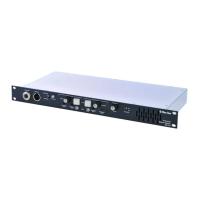
